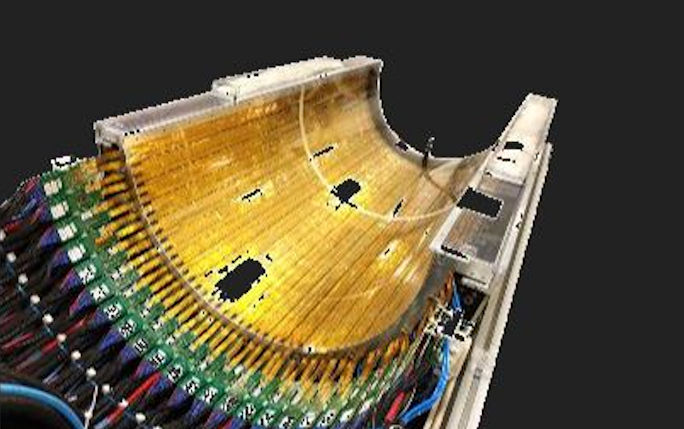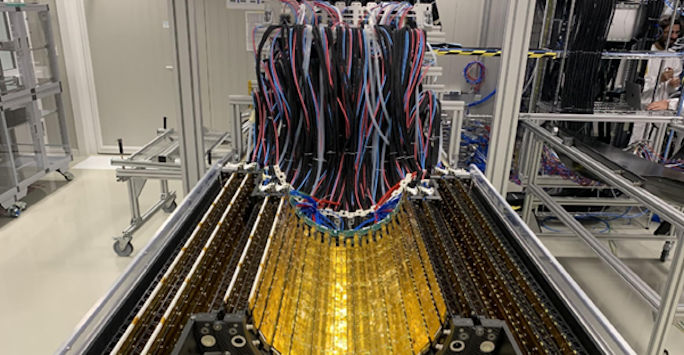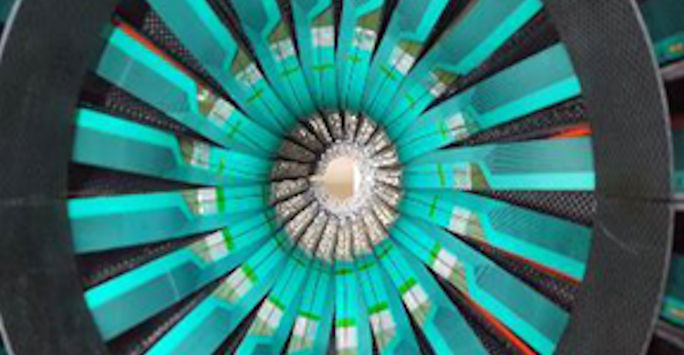Successful Completion of the ALICE Inner Tracking System Upgrade Construction

ALICE (A Large Ion Collider Experiment) is one of the four high-energy physics experiments at CERN's Large Hadron Collider in Switzerland. It focuses on measurements of ultra-relativistic heavy-ion collisions at the highest energy densities ever achieved and is concerned with an understanding of the physics of visible matter, and thereby of Quantum Chromo Dynamics (QCD) as part of the fundamental physics of the universe.
The ALICE experiment is currently undergoing a major upgrade of its detectors. This is due to be completed during the second long LHC shutdown, which started at the end of 2018 and is scheduled until spring 2021. The Liverpool ALICE Group has a strong involvement in the construction, assembly and commissioning of the upgrade of the ALICE Inner Tracking System (ITS) using state-of-the-art Silicon technology. The ITS upgrade is a full replacement of the previous ALICE Silicon tracker and consists of 7 layers of CMOS monolithic active pixel sensors (MAPS) arranged in staves (3 inner layers, 2 middle layers and 2 outer layers). The new ITS will consist of 24,000 CMOS sensors each containing 1024 x 512 pixels of 28μm x 28μm, making it the first large-scale Silicon tracker solely made with CMOS technology ever built.
The joint Liverpool-Daresbury ALICE team successfully fulfilled the UK responsibilities in the construction of the ITS Outer Barrel within the STFC-funded ALICE Upgrade project. The Outer Barrel module and stave construction has been carried out at 10 sites worldwide (in China, France, Italy, Korea, The Netherlands, UK, USA), including the Liverpool Semiconductor Detector Centre (LSDC) and the Engineering Technology Centre (ETC) at STFC Daresbury Laboratory in the UK. In Liverpool, the project entered the module production phase in November 2017. The team of Silicon detector physicists, engineers, technicians and students, from both Liverpool and Daresbury, had the responsibility of delivering fully qualified Outer Barrel Hybrid Integrated Circuits (modules), constructed at the nominal rate of 2 per day (10 per week). Work was based in the LSDC, in the G16 and G15 rooms, where module assembly with the ALPIDE-sensor pick-and-place ALICIA Module Assembly Machine and wire-bonding took place, and Quality Assurance tests were carried out, respectively. The team completed the production of >600 modules (approximately 120 modules beyond the original foreseen quota) at the end of May 2019, consistently achieving high production yields and the highest standards for any quality assurance test performed (mechanical or electrical).
At Daresbury, the project entered the Outer Barrel stave production phase in October 2018. The ITS-UK team had the responsibility to deliver a total of 20 fully qualified detector-grade Outer Barrel staves, constructed at the nominal rate of one every two weeks. Work took place in the ETC, using a Coordinate Measurement Machine for the precise assembly of half-staves and staves. The team of Silicon detector physicists, engineers, technicians and students, from both Liverpool and Daresbury, completed the project successfully in July 2019, achieving an amazing production yield of 95% for its Outer Barrel staves, which were delivered successfully to CERN. These have since been assembled onto the outer layers of the ITS detector.
Having completed the UK production of modules and staves, the Group joined the international effort at CERN in the assembly of the full detector and its services, its integration and commissioning. The complete detector, services and electronics were assembled in a clean room at CERN by December 2019, now under 24/7 commissioning operation, and will be transported and installed in the ALICE cavern at the LHC Point 2 during spring-summer 2020. Several members of the team are now based at CERN for this phase of the project.
The successful completion of the construction phase of the UK ALICE ITS Upgrade project is a major achievement for the Liverpool and Daresbury groups, which were not involved in the construction of the original ALICE experiment. This success was made possible due to the technical competence of the staff involved in the two institutes, and the unique skills and infrastructure of the LSDC and ETC.

